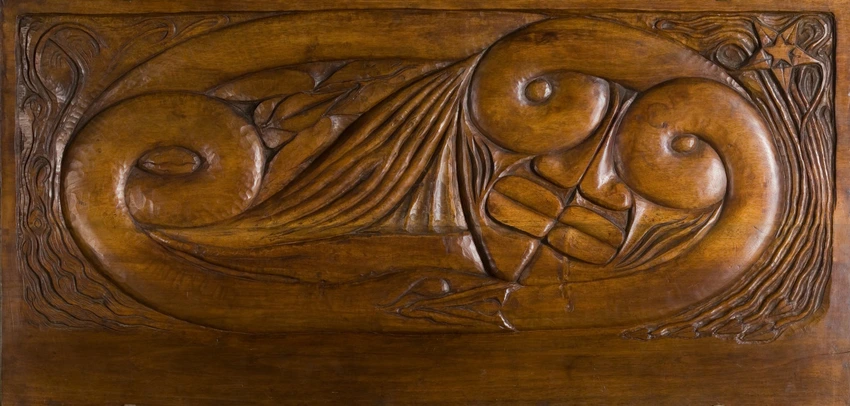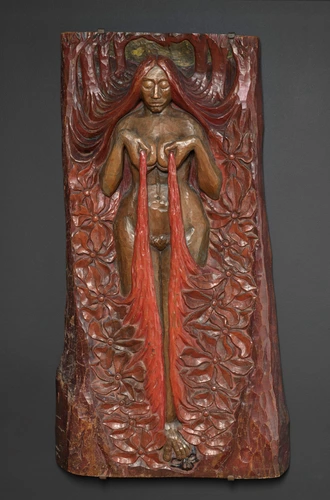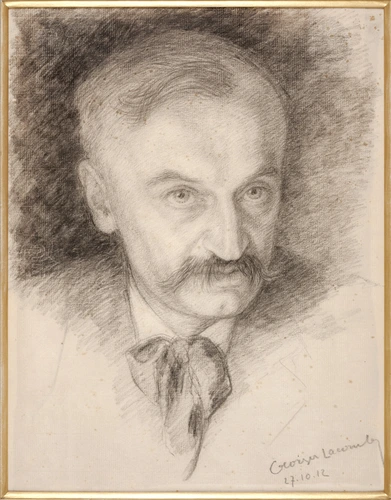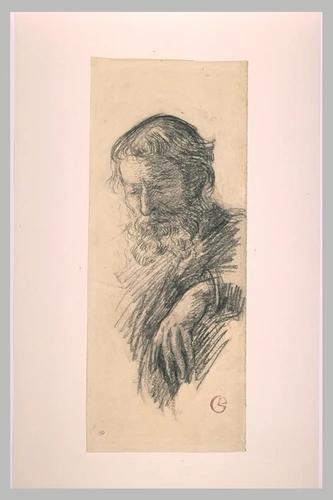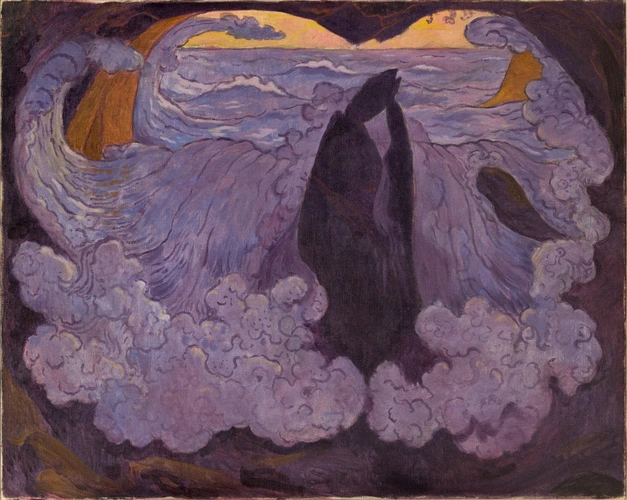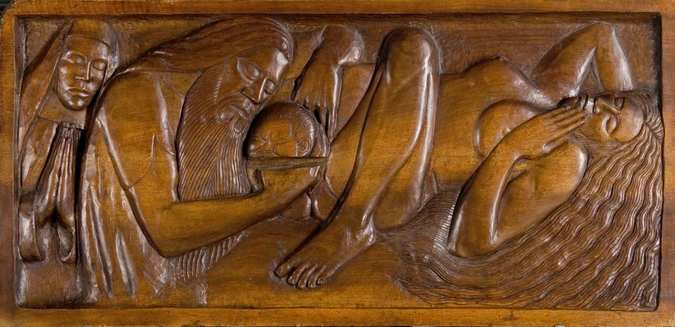L'Existence
Within the Nabi group, Lacombe was known as the "sculptor Nabi". He liked to carve directly in the wood and his work was strongly influenced by Gauguin. Existence is one of a set of four wooden panels which were originally the four sides of a bed. Lacombe had made it about 1894-1896 for his studio in Versailles which he called the "Nabis' ergastulum". On the long side are two couples at the beginning and end of their life together, Love and Death; at the foot of the bed was Birth and at the head, Existence, which is the most esoteric of the four. It shows a long snake biting its tail and represents vital energy. The loops of its body form two eyes. With two noses and two mouths, the whole forms an embracing couple, seen from the side, and a face with Negroid features, seen from the front. At the left we can see the female sex organs shown as a scored leaf. Spermatozoids spurt out of the corners.
Even if the forms are stylised the representation is very crude. This is the case for Birth as well which shows the moment when the midwife draws out the baby's head. Of course the four panels were not shown to the public at the time. They would have been shocking! They stayed in the artist's family until they were bought by the museums in 1956.
